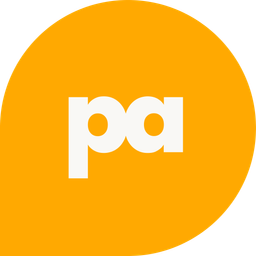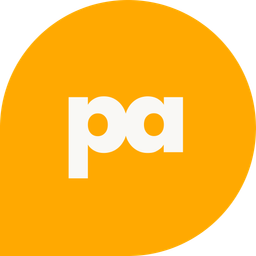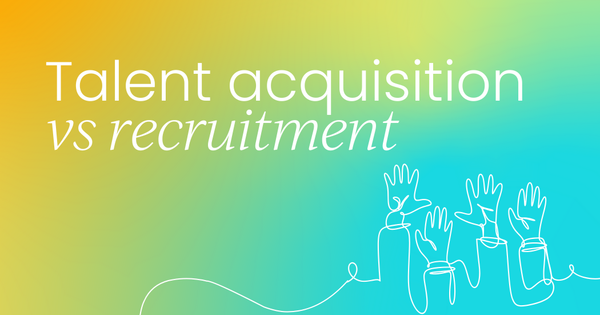If you’ve ever used “recruitment” and “talent acquisition” interchangeably, you’re not alone. On the surface, they both appear to serve the same goal: filling seats. But scratch beneath that surface, and you’ll find two very different strategies with distinct timelines, scopes, and long-term impacts on your business.
Recruitment is about filling roles quickly. It’s more transactional and focused on the present, whereas talent acquisition is a lot more strategic. It’s about building a sustainable pipeline of high-quality candidates who align with your company’s long-term vision.
We’ll get into the differences between talent acquisition vs recruitment in more detail and help you decide which strategy (or combination) is right for your team.👇
What is recruitment?
Recruitment is the process most companies turn to when they need to fill a position fast. It usually kicks in when someone leaves, gets promoted, or your team suddenly needs extra hands. The goal is simple – to find the right person, as soon as possible.
The process typically looks a little something like this:
- You post a job ad
- Resumes start rolling in
- You screen and interview candidates
- You make an offer
- Done
The process is designed to be efficient, repeatable, and meet short-term needs. Recruitment works great for entry-level roles, temporary positions, or when you’re hiring in bulk. Think: retail, call centers, hospitality – basically, anywhere that needs people quickly and often.
However, recruitment has its limitations. When speed is the top priority, long-term alignment and cultural fit can take a backseat. This can lead to higher turnover, lower engagement, and increased rehiring costs over time.
So if your team is growing quickly and you need to plug the gaps, recruitment can get the job done. But if you're thinking about the long game, who’ll lead your team in two years, or where to find top talent before you even need them, then you're looking at something bigger.
Don’t worry, we’re getting to that next.

What is talent acquisition?
Unlike recruitment, which is all about filling roles right now, talent acquisition is the long game. It’s not just about hiring, it’s about building a pipeline of the right people for the future.
Here’s what talent acquisition usually involves:
- Mapping out future hiring needs.
- Building your employer brand (so people actually want to work with you).
- Connecting with candidates before there’s even an open role.
- Creating talent pipelines (so you’re not scrambling later).
- Hiring with long-term potential and culture fit in mind.
It’s more strategic, more relationship-driven, and way more proactive. You’re not just hiring to fill a role, you’re hiring to grow a team that sticks around, levels up, and helps your company scale.
Talent acquisition is especially important when you’re hiring for leadership roles, hard-to-fill positions, or planning for growth. You can’t just throw up a job ad and hope for the best - you need a plan.
Recruitment vs talent acquisition: How the process actually works
Below, we’ve broken down the core steps of each approach. Seeing the process side-by-side makes it way easier to understand what each one does and where they don’t overlap.
🛠️ Recruitment workflow
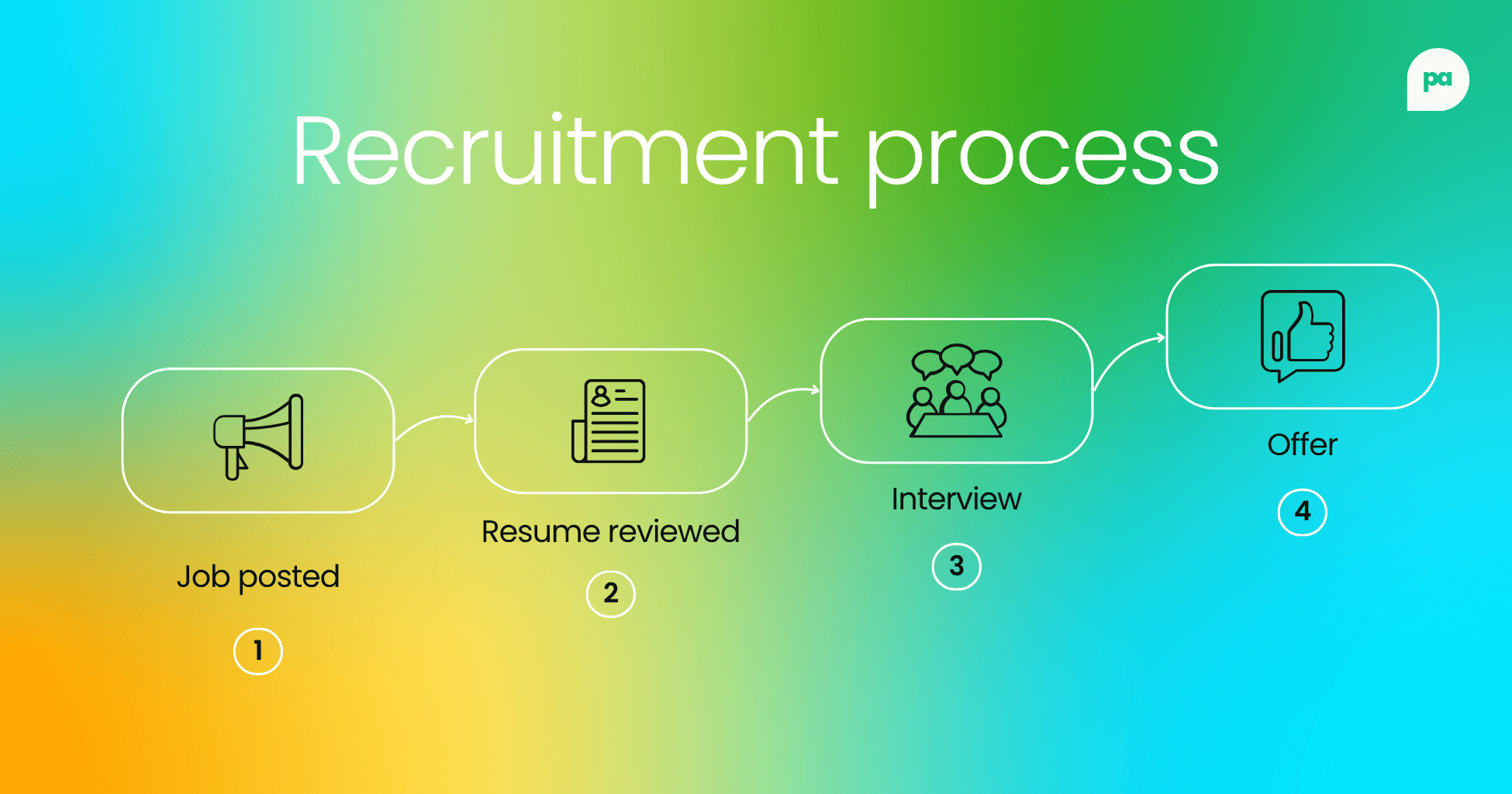
- Job posted
A role opens up, often unexpectedly. The first move is to get that job posted and live ASAP. - Resume reviewed
Applications start coming in. The recruiter scans for keywords, experience, and fit. - Interview conducted
Top candidates move to interviews. The goal here is speed and efficiency. You want to find the best available option quickly. - Offer made
The finalist gets the offer, and the role is filled. Mission accomplished!
Talent acquisition workflow
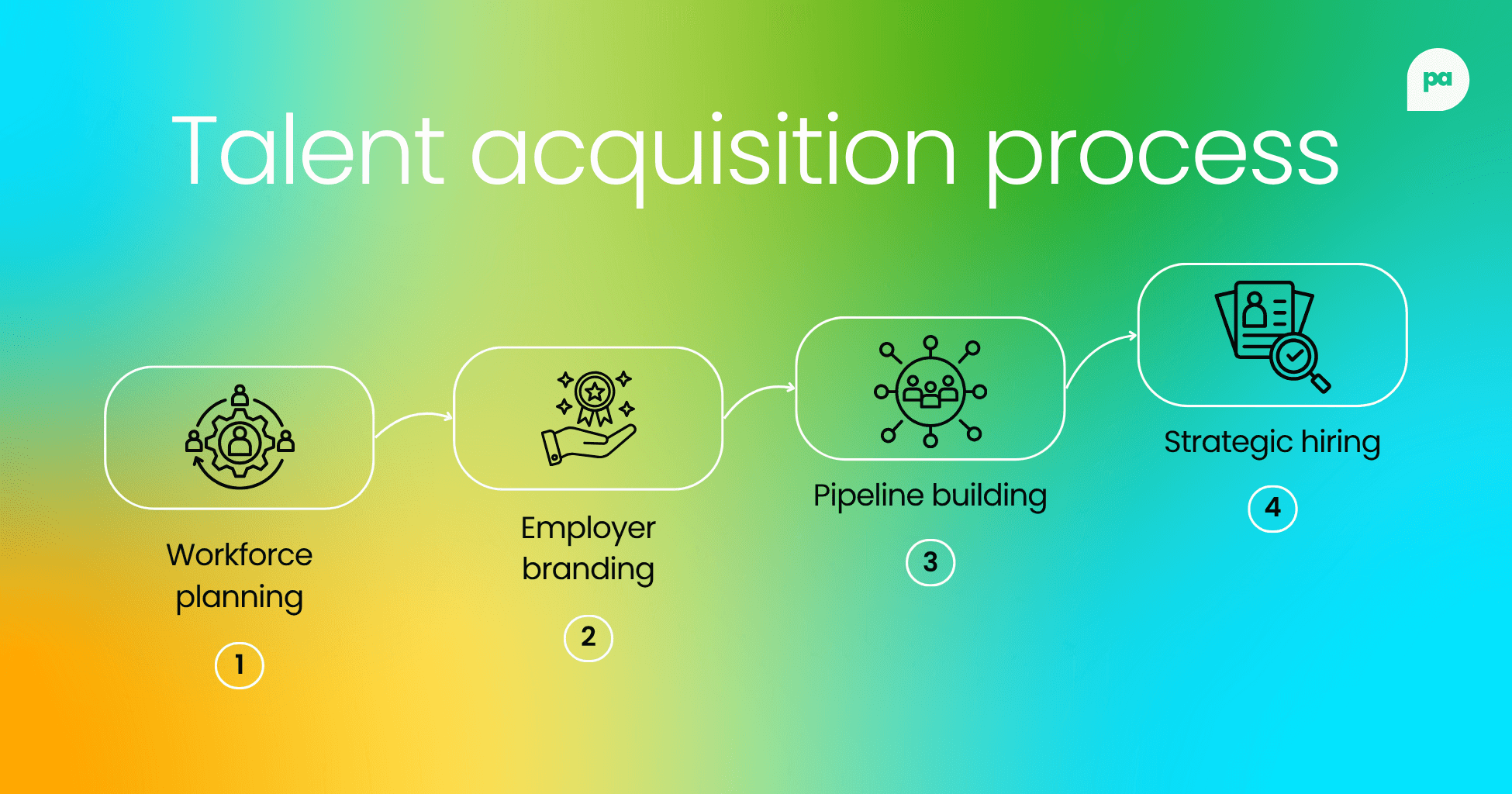
- Workforce planning
Before any role is open, HR teams partner with leadership to figure out what kind of talent the business will need in three, six, or 12 months. - Employer branding
While recruiters are chasing applicants, TA pros are working to attract them by shaping how the outside world sees your company. - Pipeline building
They connect with passive candidates, attend industry events, build talent pools, and nurture long-term relationships. That way, when the perfect role opens, they already have people in mind to fill it. - Strategic hiring
Now they hire and not reactively, but intentionally. They’re selecting from a pool of engaged, pre-qualified candidates who already understand the company culture and vision.
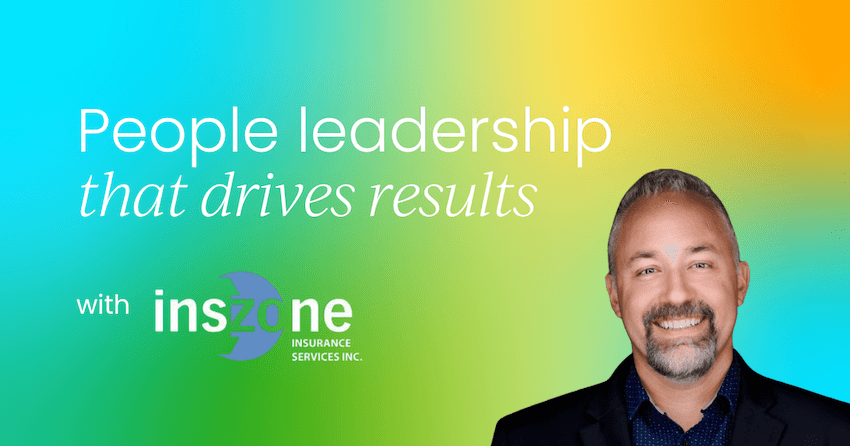
Talent acquisition vs recruitment
The truth is that recruitment and talent acquisition are not the same thing.
Sure, they both involve hiring people. But the how, why, and when are completely different.
Below, we break down the difference between talent acquisition and recruitment to help clear up any confusion:
Recruitment = Short-term. Tactical. Immediate.
- Why it happens: Someone quit, got promoted, or a new position opened up. You need to find a replacement fast.
- What it looks like: Post the job → screen resumes → interview → hire → repeat.
- Who it’s for: Entry-level roles, high-turnover positions, seasonal or volume hiring.
- The goal: Fill the role quickly with someone who can do the job now.
- The risk: You might rush the process and end up hiring someone who’s not the best long-term fit.
Talent acquisition = Long-term. Strategic. Forward-thinking.
- Why it happens: You’re planning for growth, building a strong company culture, and thinking ahead.
- What it looks like: Build relationships with great talent before you need them. Create pipelines. Invest in employer branding.
- Who it’s for: Specialized roles, senior positions, leadership hires, or hard-to-find skill sets.
- The goal: Find the right person, not just someone who can do the job, but someone who’ll thrive and stick around.
- The payoff: Better hires, lower turnover, stronger teams, and a smoother hiring process down the line.
You need both at different times, but knowing which one to use (and when) is how smart teams hire better.
Want a quick cheat sheet on talent acquisition vs recruitment? You got it:

The role of CPOs and HR leaders
Chief People Officers (CPOs) aren’t posting job ads or screening resumes. Instead, they’re asking higher-level questions like:
- What kind of talent do we need to hit our goals this year?
- Are we building teams that reflect our values and company culture?
- Do we have the right hiring infrastructure in place to scale?
- How do we compete for top talent in a tight market?
Their job is to connect hiring with business outcomes. That means working closely with CEOs, department heads, and recruiting teams to make sure hiring isn’t just fast, but smart.
A big part of their role is helping companies shift from reactive recruiting to proactive talent acquisition.
That includes:
- Investing in employer branding (so great candidates actually want to work with you).
- Building out succession planning and leadership pipelines.
- Creating a solid candidate experience from first touch to final offer.
- Aligning talent strategy with DEI, growth, and retention goals.
- Choosing the right tools and platforms to make hiring smoother.
Basically, they’re making sure hiring isn’t just a checklist, but a competitive advantage.

When to use recruitment vs talent acquisition?
By now, you know recruitment is fast and tactical, and talent acquisition is strategic and long-term. But how do you actually decide which one to use?
Here are some insights to help you make the decision:
When to use recruitment
Use recruitment when:
- You need to fill a role right now.
- Someone quit unexpectedly and left a gap.
- You're hiring for entry-level or repeatable roles (e.g., sales reps, customer support, retail staff).
- You're ramping up for seasonal or short-term projects.
- You don’t have the time or budget to build long-term pipelines (yet).
When to use talent acquisition
Use talent acquisition when:
- You’re planning for future growth or expansion.
- You regularly hire for hard-to-fill or specialized roles.
- You want to improve culture fit and retention.
- You're building leadership teams or hiring executives.
- You want to boost your employer brand and attract better candidates over time.
You don’t have to choose just one approach. Smart companies use recruitment to stay agile and talent acquisition to stay ahead. The trick is knowing when to switch gears and when to combine forces.
FAQs
Q. Is acquisition the same as recruitment?
A. Not quite. They’re related, but not the same. Recruitment is about filling a current job opening. Talent acquisition is about planning and building a strategy to find the right people for future roles too.
Q. What’s the difference between talent acquisition and corporate recruiting?
A. Corporate recruiting is typically focused on filling positions within one company, often with an internal recruiter team. Talent acquisition takes it a step further because it’s more strategic, involves employer branding, workforce planning, and long-term talent pipelines.
Q. Does talent acquisition fall under HR?
A. Yes, it usually does. Talent acquisition is often a function within the HR department, especially at mid-sized to large companies. It works closely with HR leadership, but focuses specifically on building a strong hiring strategy and sourcing top talent.
Q. What skills are needed for talent acquisition?
Some good skills to have for talent acquisition include a mix of:
- Relationship-building (with candidates and hiring managers)
- Strategic thinking (to align hiring with company goals)
- Marketing skills (to boost employer branding)
- Data fluency (to measure hiring success and pipeline health)
Q. What’s the difference between a talent acquisition advisor and a recruiter?
A. A talent acquisition advisor takes on a consultative role advising leadership, supporting DEI initiatives, and improving hiring strategies. On the other hand, a recruiter tends to be focused on filling specific positions quickly.
Q. Is talent acquisition the same as onboarding?
A. No, they're two totally different stages. Talent acquisition ends when the candidate accepts the offer. Onboarding starts after that and covers everything from signing paperwork to helping new hires get up to speed, settled in, and ready to contribute.
Q. Can a company just “switch” from recruitment to talent acquisition?
A. You can shift your approach, but it takes time. Start by doing workforce planning, investing in your employer brand, and building a talent pipeline before roles open up.
Level up your recruitment game
Want more practical tips and powerful insights into recruitment, talent acquisition, and building thriving teams?
Join us at a People Alliance event, where top HR professionals, talent leaders, and change-makers come together to share real-world strategies, tools, and experiences. Whether you're scaling your team or shaping culture, there's a session for you.
📅 Check out upcoming events and register today.👇



 Follow us on LinkedIn
Follow us on LinkedIn